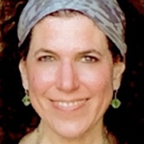A Man, A Plan, A Nyckelharpa
From Sweden to a concert hall near you
What happens when you grow up immersed in folk music in a far away land and BAM!, you discover Bach? For most musicians who are ‘classically born,’ they probably take for granted that Bach just works on their instrument. For Erik Rydvall, it was not so simple. His instrument had to be reinvented for the task. And then there was time…years of waiting…until finally the dream was realized. Now, standing in front of an ensemble of violins, cello, archlute, and harpsichord—a pure aura of joy fills the room. If you couldn’t hear him playing, you might think it was Santana performing a solo. It may be that classical music audiences have been waiting for someone to break some of those norms. Enter Erik Rydvall, nyckelharpist extraordinaire.
Unless you hit the folk festivals of Europe or hang out in Stockholm, you might not have seen one of these instruments up close. Like Yo Yo Ma taking a trip across the planet from classical to the folk musics of the world, Erik Rydvall is traveling through that portal going the other way—he’s taking his folk music upbringing and going classical.
What else can we learn about his journey? Let’s see…
Kathy Geisler: What is your current job in the field of classical music? What are you currently working on?
Erik Rydvall: Right now I’m working on the Bach Chaconne. However, this past weekend I was the soloist in Vivaldi’s Winter with the Drottningholm Baroque Ensemble. I’ve been completely taken up with it lately, but I’m always working on the Bach violin repertoire.
Kathy: What were some of your early music lessons like?
Erik: I’m basically a folk musician that jumped into classical music after my studies. I attended the Royal College of Music in Stockholm, but only for folk music. Isn’t that quite funny? When I was little I started learning violin from my mother, who is a music teacher. We played a lot at home and I performed my first concert when I was six years old playing for my friends in kindergarten. I was also influenced by my uncle who loved playing all kinds of music: classical, jazz, folk — it was inspiring for me to see him move from one genre to another. Then when I was a teenager I had this dream room with all different kinds of instruments: drums, guitar, bass, synths, a trombone, and a saxophone. I played everything. When I began playing the nyckelharpa at the age of 17, I naturally wanted to play all kinds of music on it.
Kathy: What is one of your favorite places and why?
Erik: Definitely the Stockholm archipelago. Islands everywhere, and beyond, a view of the horizon far in the distance. It’s like you can see forever.
I have to add that as a musician I love a nice hall with good acoustics, which describes most of the churches in Sweden I have enjoyed performing in.
Kathy: What is one of your favorite pieces?
Erik: At the moment I’m still so involved with that third movement of Vivaldi’s Winter, it’s difficult for me to think past it yet. Performing Vivaldi with an ensemble was crazy great. I‘m determined to find more opportunities to play the nyckelharpa with an ensemble.
Kathy: Is there an artist no longer living who somehow made an impression on you?
Erik: Definitely the nyckelharpa hero Eric Sahlström. He was born in 1912 and lived his entire life in the nyckelharpa mecca of Uppland, just north of Stockholm. At the time he started playing the nyckelharpa it was considered ultra-folky and was really obscure outside of Uppland. Then between 1960 and 1980 there was a resurgence of interest in the nyckelharpa. Instrument makers created a new crop of them and then the instruments evolved along with the level of playing. This led to the nyckelharpa becoming integrated into the modern folk scene of Sweden. It was then that Sahlström became very popular in folk music circles and in popular music. He also invented a three row chromatic nyckelharpa and composed a lot of great tunes for it. Sahlström was determined to bring the nyckelharpa into main stream music performance and I often feel like I’m continuing his journey when I play Bach and Vivaldi.
Kathy: What is one thing you think will be different about classical music 100 years from now?
Erik: Good question. No idea!
Kathy: What is something about your work that you think most people have no clue about?
Erik: My instrument. Hahahah. I have millions of views on some of my videos where I practice playing solo Bach. There are so many comments from people asking what instrument I’m playing. In general, people are very curious about it and I think it’s a positive sign that I’m reaching a new audience in classical music while at the same time expanding that audience by bringing a lot of folk music people along with me.
Kathy: Did you have any life-changing experiences that put you on the path that led you to be doing what you’re doing today?
Erik: Yes! It’s when I realized that wanted to play Bach on the nyckelharpa. The traditional nyckelharpa is tuned like a viola and so I approached my nyckelharpa builder with the idea of creating a new type of instrument with an E string. That would make it possible to play violin works on it without having to transpose them. It actually took 10 years to persuade him to build it! I told him that if he built the instrument for me, I would one day perform on it accompanied by a baroque ensemble. Now, after five years of having the instrument, I had the opportunity to perform Vivaldi’s Winter with the wonderful Drottningholm Baroque Ensemble in Stockholm. A dream realized. And I’m just getting started…
Here is the third movement of Winter from the live concert video. Enjoy!
